Page Content
A Collage
While crossing the country collecting materials for our docuweb on migratory birds, we stumbled upon many birds – some migratory and others which are not. We decided to display an assortment of both types of birds, which represent only a fraction of what was seen and documented.
Sound From Gold Selection of Italian Folk Music – Tarantella Napolitana – Played by Al Caiola
Pictures of Assorted Birds
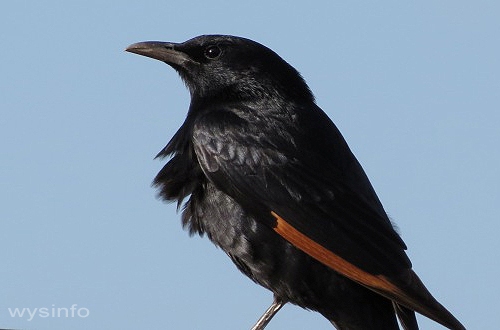
Named after Reverend Henry Baker Tristram, this bird’s habitat is the eastern part of the Israeli Dead Sea area, Jordan, East-North Egypt, Saudi Arabia and Yemen. It is friendly, gregarious and a noisy bird that feeds on fruit and invertebrates.
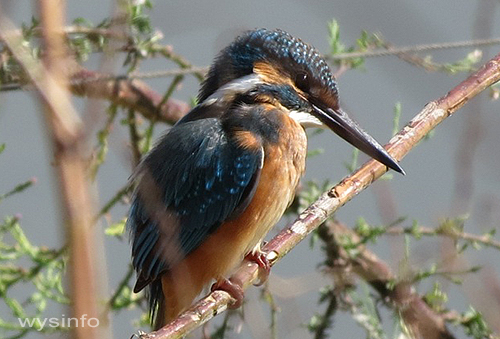
The common kingfisher above is a small sparrow sized bird with seven subspecies currently defined. It is also known as ‘river kingfisher’ or ‘Eurasian kingfisher’ where it is widely spread.
It prefers mild climates. When the bodies of water, which are its natural habitat, freeze in winter it will migrate south. The kingfisher migrates mainly at night. In North Africa it is mainly a migrant.
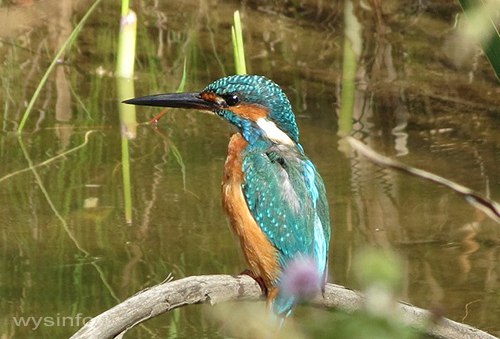
The bird’s diet consists primarily of fish caught by diving. Its vision is also adapted to see in water. Male and female resemble in shape and color apart from the lower mandible where the color of the female is orange-red with a black tip.
The bird is a good indicator for the ecosystem balance. It lives off fish in clear water and searches for them while perching on low reeds and bushes looking downwards. These are basic elements before choosing its habitat. It is very territorial and usually defines a relatively large area for itself for the need to supply about 60% of its weight daily.
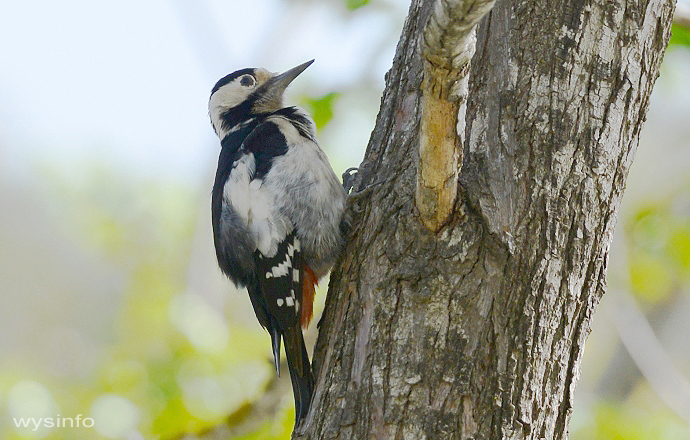
The picture of the Syrian woodpecker above was taken in a Jerusalem residential area. Its habitat stretches from Southeastern Europe to Iran. In resent years it has been seen expanding gradually to North Western Europe as well.
This bird feeds mainly on beetles, various insects and larva. When food is scarce, nuts seeds and fruit will accommodate its diet. It creates its nest by digging a horizontal hole, roughly about 5 cm in diameter, into usually a soft or rotting tree trunk. Then it digs vertically down. At the bottom up to 11 eggs are laid on the chips of wood, the by-product of the digging process. The sound of the picking bill on the trunk, which is heard from a distance, is also an additional way of communication on top of its vocals.
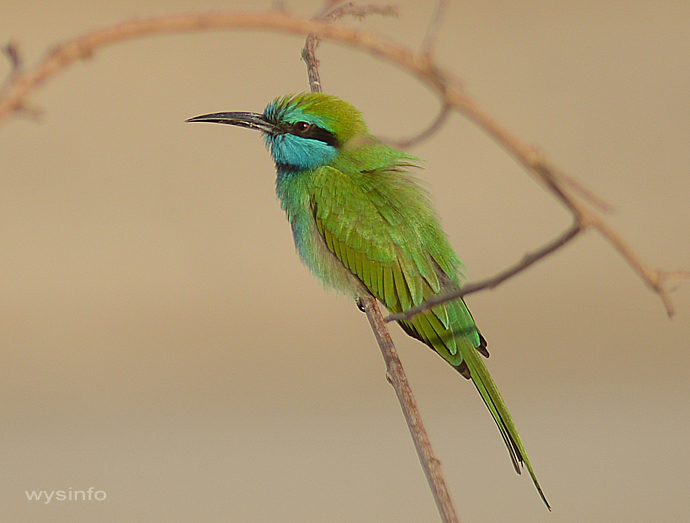
The photo of the little green bee-eater above was taken in the Dead Sea area. It can also be found in large quantities in the Sub Saharan Africa, West Arabian Peninsula, Asia, India and Vietnam. Although a resident of the area, it is prone to seasonal relocation.
This bird mostly lives off flying insects and can be found in thin bushy semi-dry areas, usually away from rich sources of water. Like others in the bee-eater family, this species is very colorful. It is a social bird and is often seen in small groups.
It usually baths in sand, and sometimes in water, by dipping into it in flight.
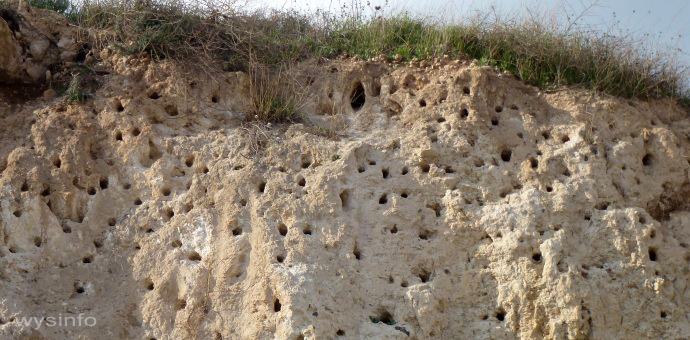
The bee-eaters lay 3 to 5 eggs in nest tunnels that they construct within a wall. This tunnel can run as much as 5 feet long. Both sexes incubate. The eggs hatch after an incubation period of about 14 days. The chicks are ready to leave the nest in 3 to 4 weeks.
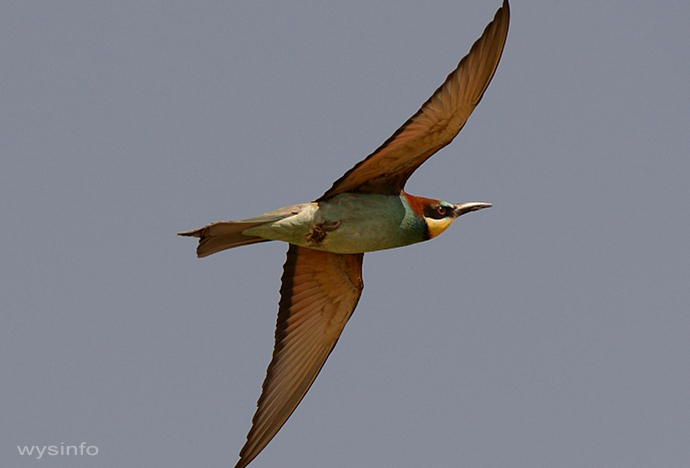
Picture taken in Modiin, Israel
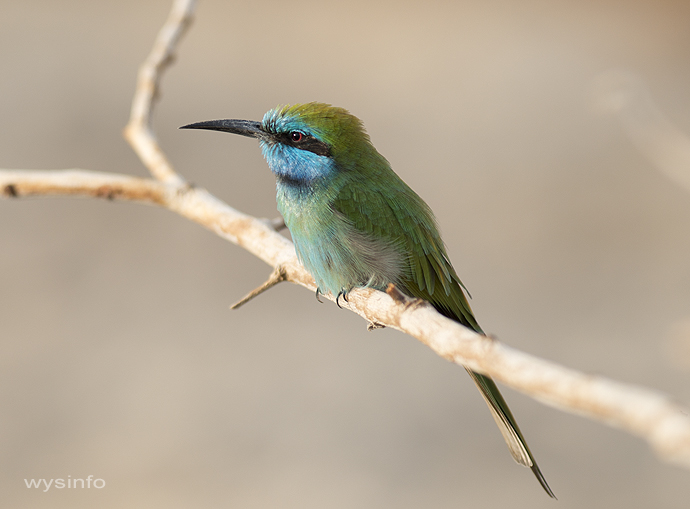
Picture taken in the Dead Sea Area, Israel
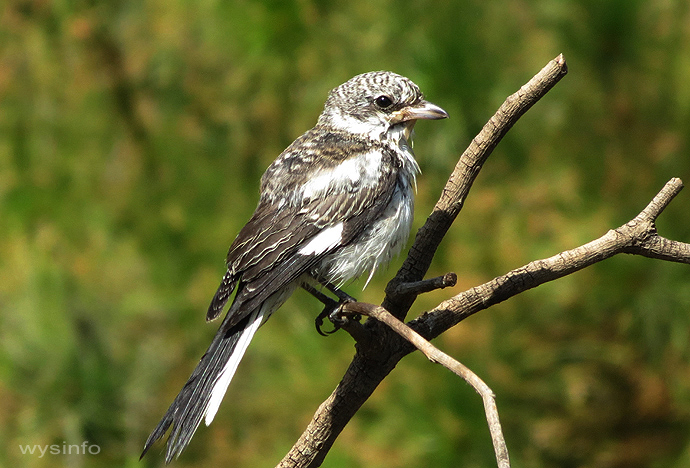
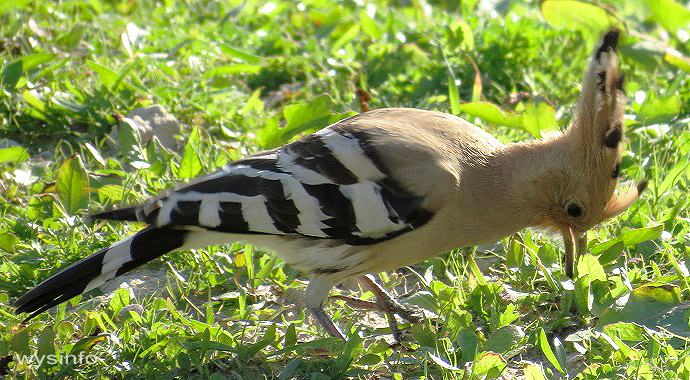
The hoopoe is classified in the Coraciiformes order together with kingfishers and bee-eaters, which are also displayed on this page.
It is a medium-sized bird, very distinct in shape owing to its long beak and noticeable crown. It has broad rounded wings that are capable of strong and solid flight. It is widespread in Europe, Asia, North Africa and Sub-Saharan Africa. While the northern population of hoopoe birds is mostly migratory, those in the south are stable residents.
The hoopoe’s natural habitat is varied and includes grassland, wooded areas, savannas, parks, orchards, vineyards, farmland and so forth.
Hoopoes feed mainly on insects, seeds and also berries. Small reptiles and frogs are also part of its diet. The hoopoe, like most birds, is territorial and can be involved in fierce fights over territory especially during mating periods. During the mating season the hoopoe is monogamous, although it looks like the link between the male and female lasts for one season only.
Nature granted the hoopoe with an interesting ability to produce a repelling odor to protect its eggs and chicks from predators. A gland at the base of its tail generates, only in the breading season, a secretion that smells like rotten meat. This is rubbed into the plumage or against the eggs thus minimizing the risk to serve as somebody’s diet.
Owing to its diet, which contains many species that are considered to be pests, this species was defined as a protected species under the law of many countries.
Although in Estonian tradition the hoopoe is associated with death and in Scandinavia represent an omen for war, it has earned a respected position in different countries throughout history.
In ancient Egypt it was considered sacred, it is mentioned a few times in the bible, and also in the Quran. The hoopoe was a symbol of virtue in Persia. It was considered as the king of birds in ancient Greece. It was chosen as the national bird of Israel in 2008. It was also chosen as the state bird in Punjab province in India. It appears on the logo of the university of Johannesburg and there is a hoopoe symbol in the municipality of Armstedt in Germany in its coat of arms.
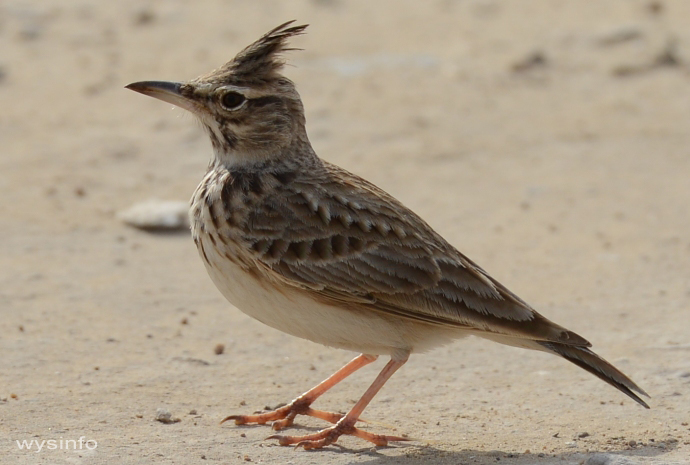
The picture above was taken in Maagan Michael, Israel, along the shore of the Mediterranean.
The crested lark is a relatively small songbird with an average of 34 cm wingspan and weighs between 37 to 55 g. It is one of about 80 different species of larks. Male and female look alike. The crest on top of his head is more distinct during performance shows, while being territorial and when singing.
It breeds in the more moderate climate of Eurasia from Portugal to northeast China, in eastern India and in Africa south of Niger. The crested lark is a non migratory bird that prefers open country habitat. It feeds mostly on grains and seeds and will also eat insects and beetles if needed. It is assigned to the category of ‘Least Concern (LC)’ by the IUCN Red List of Threatened Species, since it is estimated to have a population of a few dozens of millions. However, the last years indicate a constant diminishing in numbers in the colder countries.
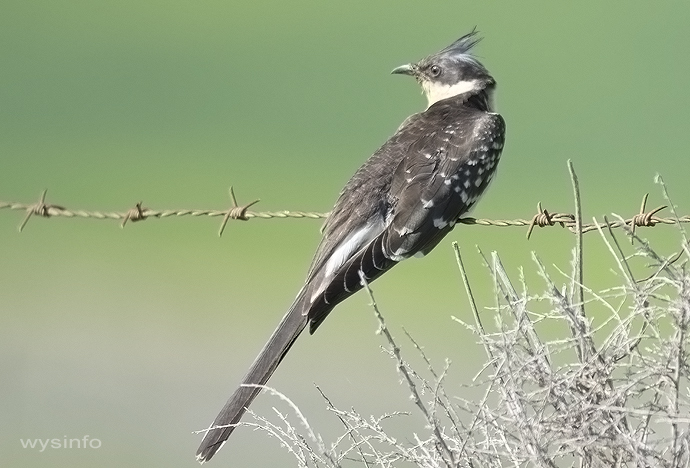
The picture of the migratory great spotted cuckoo above was taken at the end of the winter in the North Western Negev in Israel.
The great spotted cuckoo is a common summer migrant to southeast and southwest Europe and Western Asia. It winters in Africa. An interesting behavior of this bird is his practice to lay its eggs in other species nests and to have the host incubate and feed the chicks once they hatch. This is a typical brood parasite behavior.
Another interesting phenomenon is the ability of the chicks to generate material with repelling odor that helps to keep possible predators away thus helping to also save the hosts chicks from birds of prey.
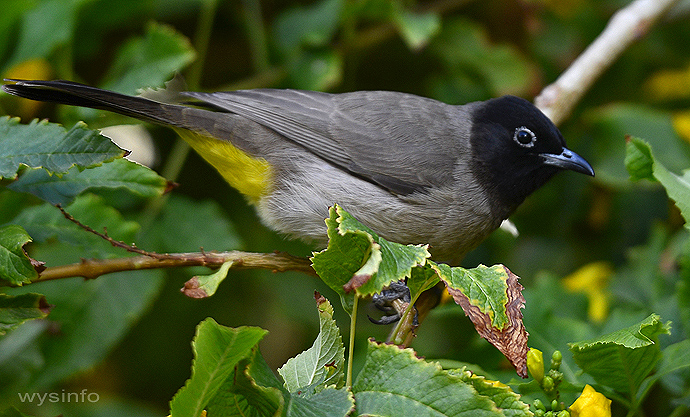
Slightly larger then a house sparrow the spectacled bulbul is a non migratory bird that is widespread along the east shore of the Mediterranean, in Israel, Turkey and Lebanon, Sinai and western, central and southern Arabia. The picture above was taken along the shore of the Dead Sea.
It is an active bird, gregarious and moves in small groups. It nests in parks, near agriculture and close to any area with water and plantations. The spectacled bulbul generally is not afraid of humans and often can be seen in residential districts.
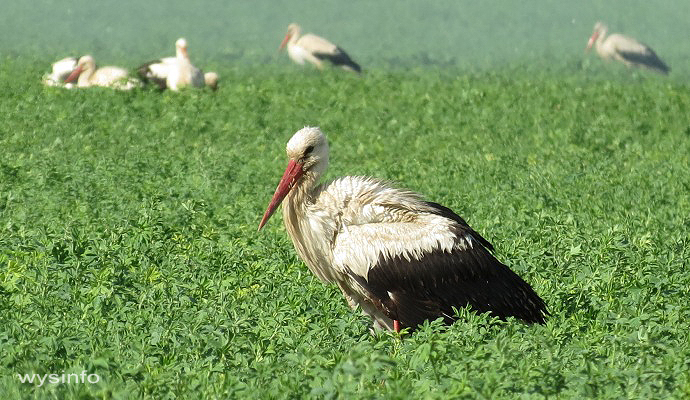
The picture of the white stork above was taken in spring in the Ella Valley close to Jerusalem. This stork is one in a flock of about 70 members that paused for refuel and rest on their annual journey back to Europe after spending the winter in warm Africa.
The white stork is a large bird with a wingspan that normally exceeds 2 meters. It is a long distance migrant. There is a wide distribution of the white stork in Europe, Southwest Asia and currently also in South Africa.
The storks from Europe winter in Africa, usually from the Sub-Sahara Africa to South Africa. During migration, they avoid the route along the Mediterranean and prefer to fly inland, using the thermals that are generated there for gliding, consequently saving a great deal of energy.
The white stork feeds off fish, reptiles, small mammals birds and insects. It picks most of its food from the ground and prefers open space and low vegetation. It appears in legends of many cultures and is also mentioned in the bible as a migratory bird.
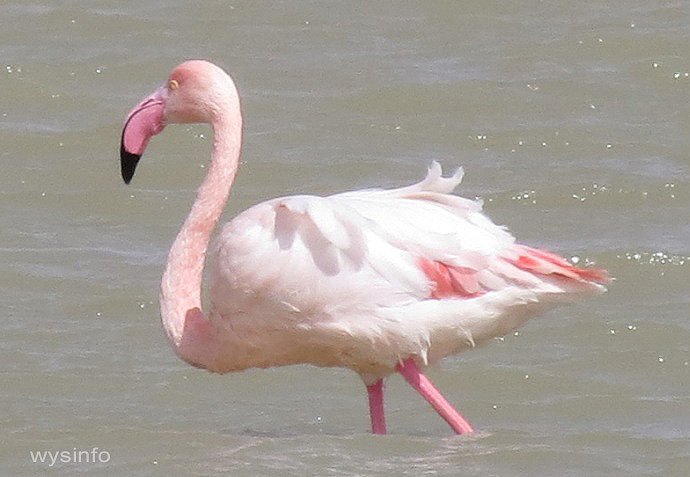
The picture of the flamingo above was taken in a salt pond some 5 km north of Eilat. Being a migratory bird by nature, one would expect it to continue south to Africa during the migratory season. However this flamingo, as part of a group of a few hundreds birds, decided to make the salt pond area its home.
It is already a few years in a row that this group of birds, feeding off algae that can be found at the bottom of the ponds, have decided to give up the long dangerous journey to Central Africa for the warm winter and to stay.
Moreover, it looks like they have adjusted themselves to the heat of the summer in Eilat and have replaced the tough migratory pattern with the easier, solid residential life.
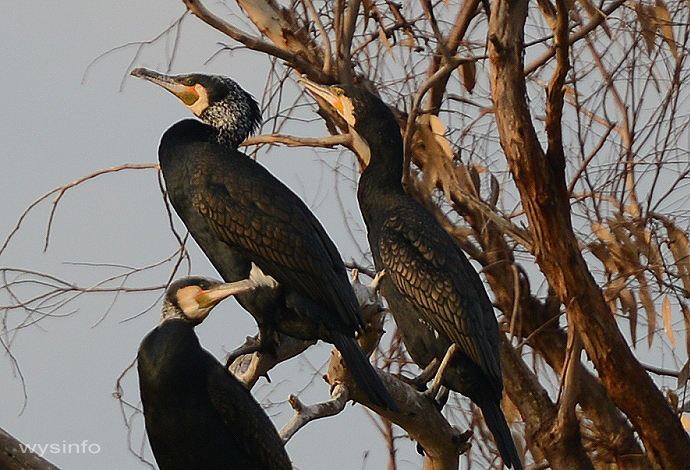
The picture of the great cormorants above was taken along the Mediterranean shore in Palmachim, Israel.
The great cormorant is a large sized bird which can vary between 70 cm to over 100 cm. It weighs between 1.5 kg to almost 5.5 kg. It has a wingspan of up to 160cm.
The great cormorant is the most widely spread of all cormorants. It breeds in Europe, Asia, Africa, Australia, and along the Atlantic cost in north America. Those which reside in colder areas are migratory. They can be seen during the migration seasons along the Mediterranean shore and in large numbers in the banks of the Sea of Galilee.
The great cormorant feeds off the sea. It is an agile fisher and is often seen to dive for 20 to 30 seconds into relatively deep water. Many fishermen considered it to be a competitor but in China, Japan and some other areas in the east it is being exploited for fishing. They tie its neck to a point where fish, caught by the bird, cannot be swallowed. Then, forcing the cormorant’s mouth open, they pull out the prey.
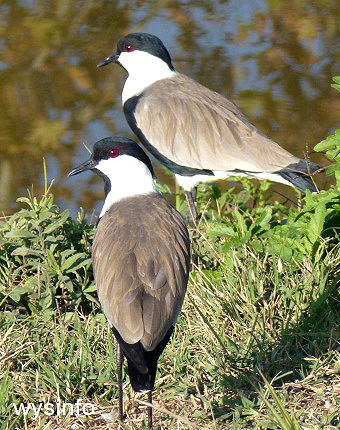
The spur-winged lapwing got its name due to a spur (small claw) hidden under the feathers of each wing. The spur is known to be used in case of confrontation with other species or in danger, when needed.
It is a medium sized bird that lives close to wetland areas, small to medium sized bodies of water, and marshes. It feeds off invertebrates and various insects.
This bird is widespread along the east of the Mediterranean, and from the Sub-Saharan West Africa to Arabia. The population in Greece and Turkey is migratory.
***
Related Links: